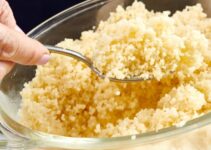
Rauwolfia root introduction
Rauwolfia Serpentina (Sarpagandha) is one of the essential Ayurvedic medicinal herbs. The root of this herb has been used since ancient times. The importance of the heart and the alkaloids obtained from it has been recognised in modern medicine in treating hypertension and Neuropsychiatric disorders.
Rauwolfia nutritional facts
The root of Sarpagandha contains a large number of alkaloids. The biochemical substances in rauwolfia are ajmaline, ajmalicine, ajmaline, rescinamine, reserpine, reserpine, serpentine, serpentine, and yohimbine. According to Pharmacopoeia of India, the plant comes under hypotensive drugs.
Rauwolfia export
The root of the plant has excellent medicinal value. It has been used to treat diseases and disorders. Because of reserpine therapeutic values, it is exported to the developed country in large quantities.
Rauwolfia distribution
Rauwolfia serpentina is widely distributed in the sub-Himalayan tract of Punjab, Sikkim, Bhutan, the lower hills of the Gangetic plains, eastern and western ghats, and some parts of central India. Beyond India, it is found in East Pakistan, Burma, Malaya, Ceylon, Java, and Thailand.
A different name of Rauwolfia
English: Rauwolfia root, Serpentine, Serpentine root, Serpent wood.
Hindi: Chotachand, Harkaichanda, Nai, Nakulikanda, Chandrabhaga
Sanskrit: Sarpagandha, Sarpakshi, Sarpangi, Sarvagandha, Sugandha, Surasa, Surpadini, Suvaha, Vasara, Vasupushpa, Vishamardani, Vishamardnika, Vishanashini, Chandra sura, Chandika.
Rauwolfia medicinal uses
- Snakebite: In earlier times, it was used for various diseases, including snakebite tranquiliser, hypertension, insomnia, and insanity.
- Epilepsy: It is used for epilepsy and dysentery.
- Hypertension: Reserpine has a depressant action on the central nervous system and produces sedation and a lowering of blood pressure. Clinically, the root is used for the treatment of psychoses and hypertension.
- Anti-pyretic: Sarpagandha is an antipyretic, anti-diarrhoeal, anti-hypertensive, anthelmintic, hypnotic, sedative, tranquilizer, and increases uterine contractions.
- Intestinal disorders: Extracts of the roots are valued for treating intestinal diseases, particularly diarrhoea dysentery, and also as an anthelmintic.
- Fever: When mixed with other plant extracts, it has been used to manage cholera, colic, and fever.
- Childbirth: It is believed that the root helps to stimulate uterine contractions and is recommended for use in childbirth to promote the expulsion of the fetus in complex’ juice cases.
- Cornea health: The juice of the leaves has been used as a remedy for the opacity of the cornea.
- Mental illness: Patients with chronic mental illness treated with reserpine often become relaxed, friendly, and cooperative.
Reserpine is considered valuable in the treatment of chronic schizophrenics. - Migraine: The daily dose of 50 to 100 mg of Rauwolfia produced relief in migraine and headache.
Rauwolfia precautions
The plant root should be used with caution in anxiety depressive states and in patients with cardiac arrhythmia, myocardial infarction, severe cardiac damage, bronchitis, asthma, and gastric ulcer. Higher doses may cause flushing, insomnia, bradycardia, occasionally Parkinson’s, and intense mental depression, which may lead to suicide.
Why is rauwolfia not used in psychiatry?
Rauwolfia, these days, is not used in psychiatry for the following reasons:
- The action is slow.
- Causes severe mental depression.
- Induces extra-pyramidal damage.
- Induces parasympathetic overactivity like salivation, vomiting, diarrhoea, and bradycardia.
- Induces peptic ulceration,
- Aggravate allergic disorders.
Rauwolfia dosages and administration
- Dry extract: 15 to 60 mg
- Liquid extract: 0.2 to 0.5 ml
- Rauwolfia tablet:4 mg daily or as advised by the physician.
- Reserpine injection: 0.25 to 1 mg intramuscular
- Reserpine tablets: In psychiatric state: 1-5 mg daily in divided doses. In hypertension: .05 mg daily.
- Usual strength: 0.25 mg.
- Powdered root: 20 to 30 grains twice daily
- Decoction of Rauwolfia(1:10): 1 to 2 oz.
Rauwolfia health benefits
- Sleeplessness: 150 mg to 250 mg of powder can be given in sleeplessness. It induces sound sleep. In insanity, it should be provided with rose water. A diet rich in rice and milk should be given to these patients.
- Anxiety neurosis: Take the mix of Sarpagandha powder, Khurasani Ajwain powder, and Sugar (500 mg). t is given with cold water two hours before bedtime, in case of sleeplessness and one hour after a meal, twice in case of anxiety neurosis and
under stress and strain conditions. - Nervous System Disorders: Take an equal portion of Sarpagandha powder (1 part), Vacha (Acorus Calamus) (1 piece), and atamansi (Nardostachys (1 article). Mix and take one teaspoonful three times a day with cold water or gulabark in the treatment of Hysteria, Schizophrenia, Delusion, Emotional
states and personality disorders. - Tranquilizer: Take Sarpagandha (1 gm), TrifIa Churan(Trio-myrobalans) (5 gm) and Bael leave juice (Eagle Marvellous) (10 gm). Could you combine these powders with the liquid and make small pills of 500 mg? Morning and evening, one tablet with milk or whey should be taken for High Blood Pressure and emotional and Aggressive behaviour.
- High Blood Pressure: Sarpagandha (1 gm), Harad(1gm), and Giloy(1gm). Mix and take daily with Terminalia Arjuna) decoction or water for treating heart problems, high blood pressure, and tachycardia.
- Migraine: Take Ashwagandha (1 part), Sarpagandha(1 piece), and Piper longum root (1 piece). Mix all in equal quantity and take half to one teaspoon twice a day rescinding for
the management of sleeplessness, tension headaches, and migraine.





Nice post Very good best
Is it having any side effects?
This image is not sarpganda.. this is bryophyllum
This is not sarpgandha, it is bryophyllum genus